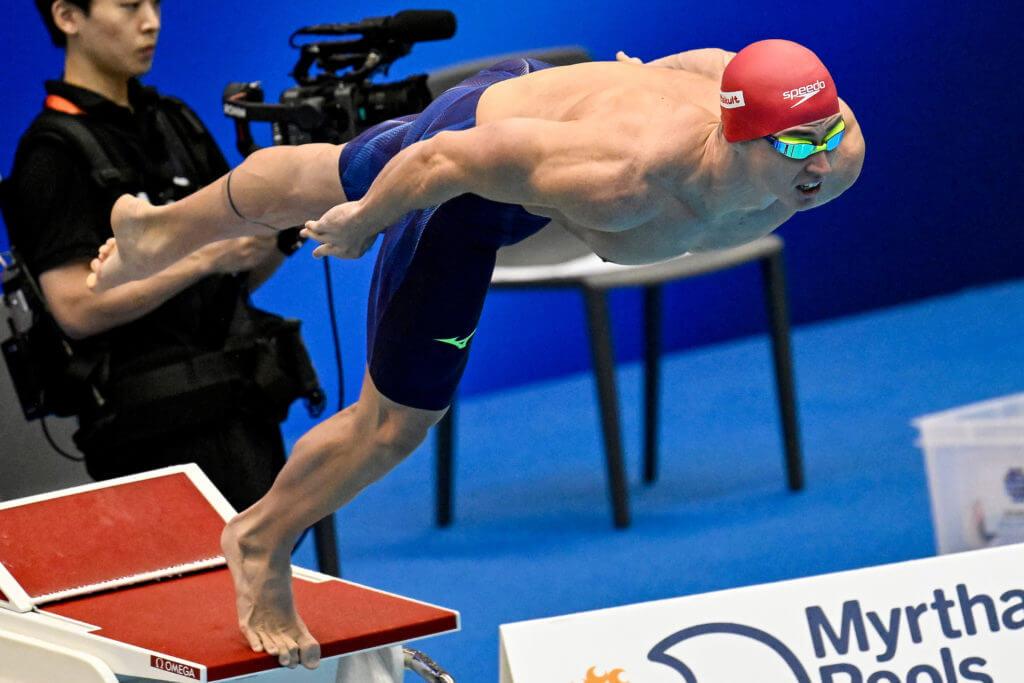A Look at Swimmer Muscles by Stroke
By Bri Groves, Swimming World College Intern, in collaboration with the creator of Swim Science, Dr. G. John Mullen
It’s no surprise that swimmers keep their bodies in peak shape and their commitment comes with an added benefit for fans. Not only can we watch them dominate in the pool, we can also enjoy the visual display of muscles flexing, faces grinning, and some seriously hot racing. Here’s a stroke by stroke breakdown of the stereotypical swimmer’s body.
Butterfly
Photo Courtesy: Peter H. Bick
Butterfliers have the arms. Their triceps are toned, their biceps are ripped, and they have some seriously large shoulders. While the undulation relies primarily on the abs and hips, butterfliers focus their efforts on the catch starting with their hands and ending at their lats, allowing the rest of their body to flow through the water.
Butterfly requires the fullest whole body muscle engagement out of the four strokes and the most arm muscle engagement per stroke cycle. While butterfliers often complete less stroke yardage than their counterparts, their high intensity training promotes toned muscles throughout the body.
Primary Muscle Groups:
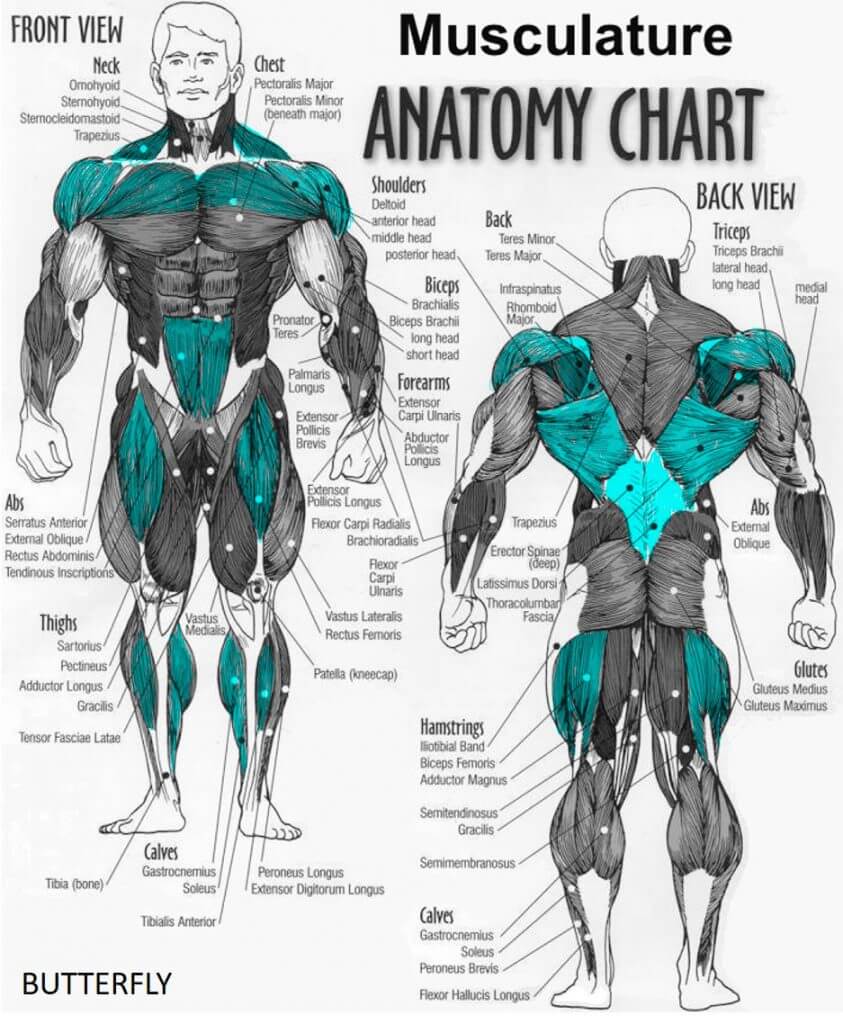
Photo Courtesy: Bri Groves
Backstroke
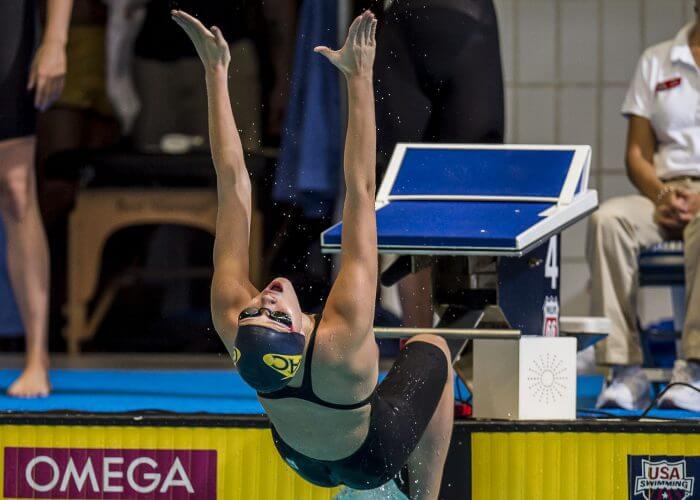
Photo Courtesy: Peter H. Bick
Backstrokers are known for their firm pecs, thighs, and glutes. To keep themselves afloat, backstrokers rely heavily on their chests and midsections. An elite backstroker may appear to be effortlessly moving through the water, when in reality, the swimmer is subconsciously engaging each of these muscle groups. Backstrokers’ lower physical cognizant awareness allows them to continue for long periods of time at high cadences with comparatively low fatigue.
During the sprint cycle, a backstroker changes cadence by flexing the trapezius and lats. The engagement of these two large muscle groups results in a temporarily increased stroke rate and higher body position. Despite these benefits, prolonged flexing of the neck and back hinders rotation. Thus, these muscles are primarily active during short bursts of speed.
Primary Muscle Groups:
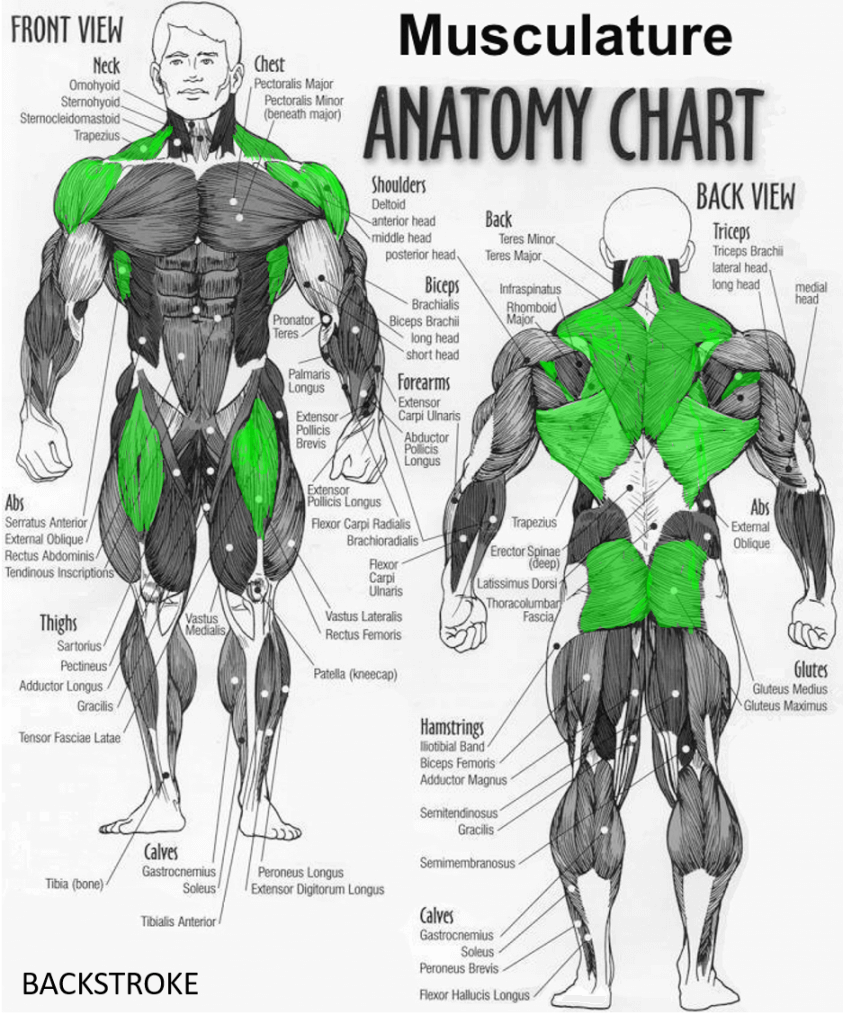
Photo Courtesy: Bri Groves
Breaststroke

Photo Courtesy: Andrea Staccioli / Deepbluemedia / Insidefoto
Breaststrokers dominate when it comes to lower body strength. Like frogs, their legs display wonderful definition while their arms try to catch up. The rhythm of the stroke is determined by the amount and speed of the water that they can squeeze between their legs. An efficient breaststroker combines the force of his or her kick with an equally powerful chest press. These combined motions facilitate low stroke counts and muscle relaxation during the gliding period.
In practice, breaststrokers often excel in kick sets with minimal fatigue. Look out for them in the IM, as they make their way to the front during the third leg.
Primary Muscle Groups:

Photo Courtesy: Bri Groves
Freestyle
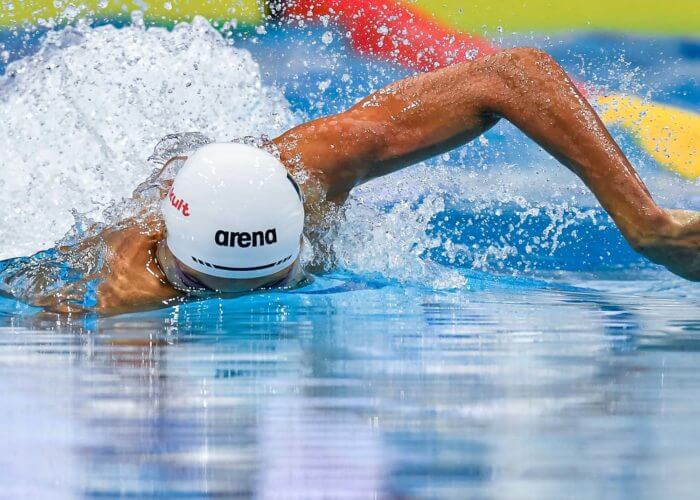
Photo Courtesy: Andrea Staccioli / Deepbluemedia / Insidefoto
Freestylers have the hips, hands, and feet. The stroke’s long axis rotation makes it ideal for tall people and even better for tall people with large appendages. Freestylers’ hands act as paddles while their bare feet often resemble the size of a stroker’s fins. Following the initial catch, freestylers rely on the largest muscle groups of the arms and legs to propel them forward.
The complete freestyler package contains wide hips to facilitate easy rotation and promote galloping through the water. A muscular midsection promotes connection of the leg muscles to the back and arm muscles. This connection is amplified by freestyler’s slight side pivoting to enable breathing and maintain shoulder stability.
Primary Muscle Groups:
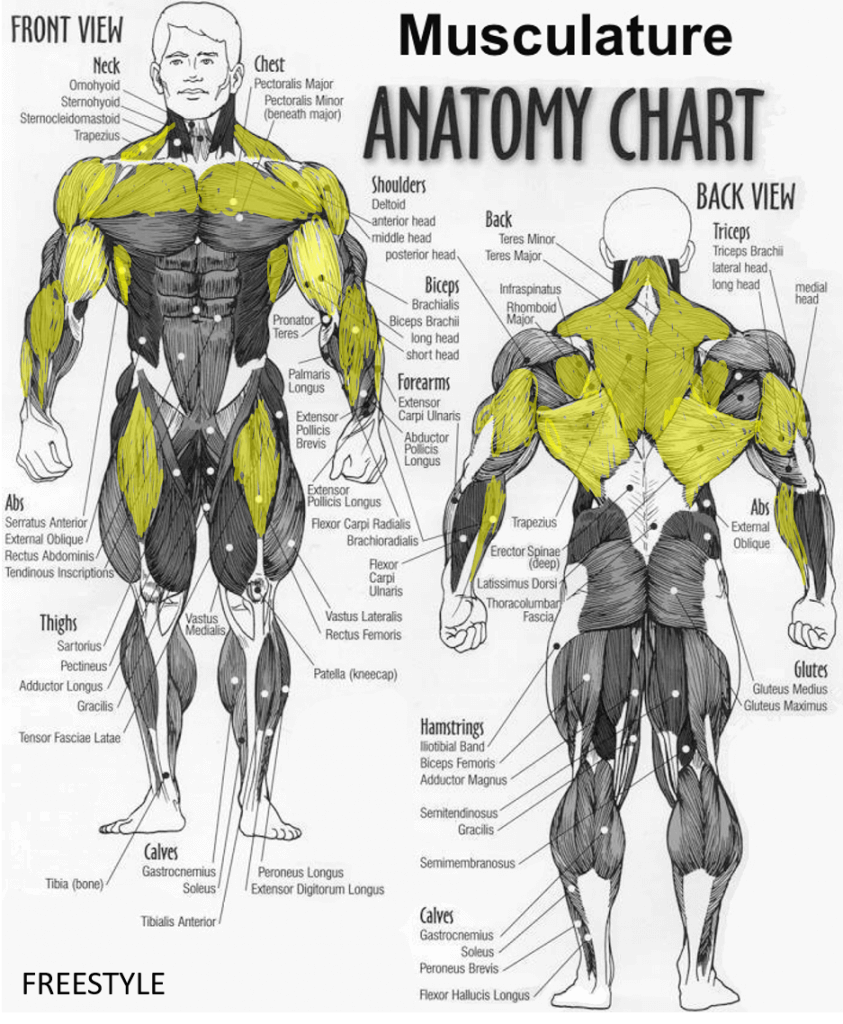
Photo Courtesy: Bri Groves
IM
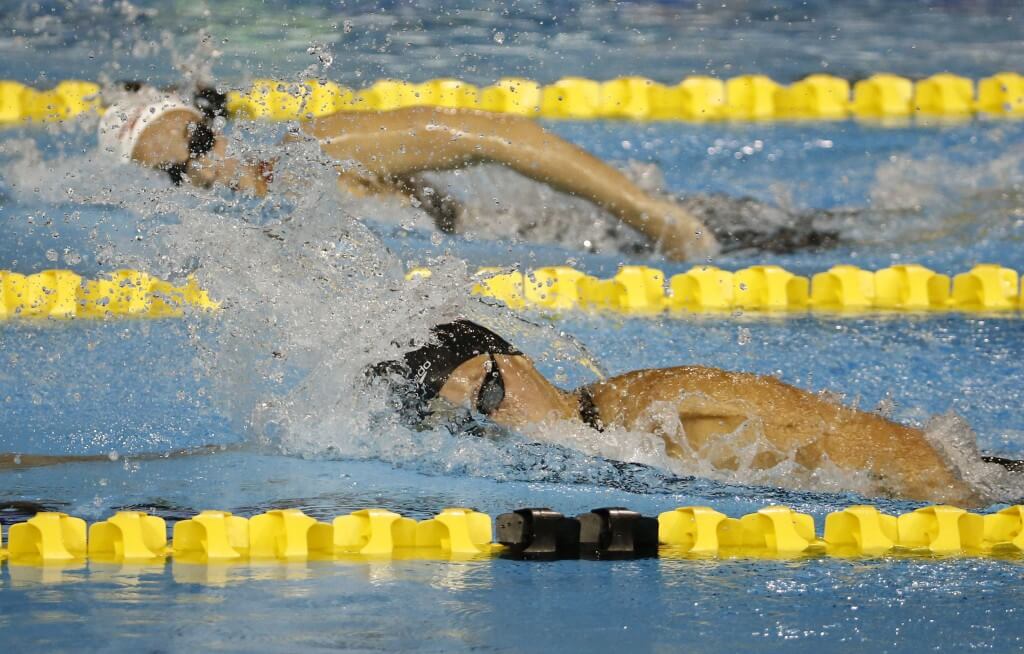
Photo Courtesy: Rob Schumacher/USA Today Sports Images
IMers are indecisive. They like working a variety of muscle groups and toying with all the strokes. Watching an IM event is like a four in one deal for fans, we get to see all the muscles and strokes. What a crazy combination.
Primary Muscle Groups:
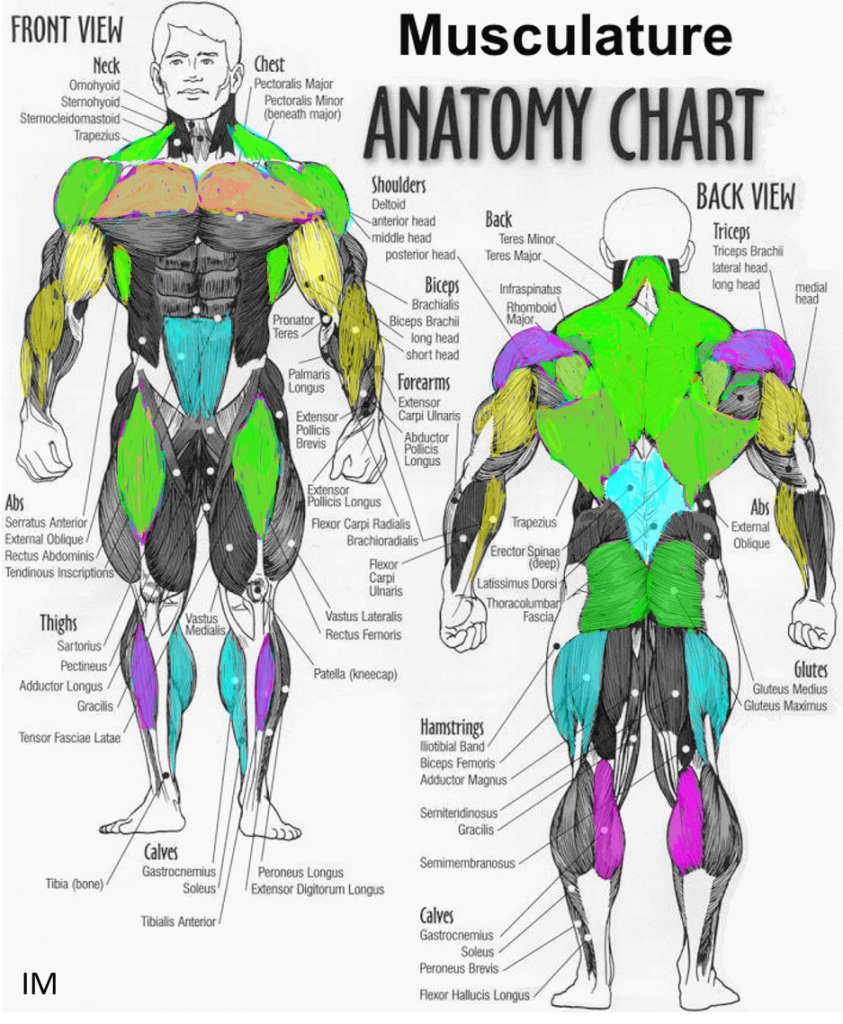
Photo Courtesy: Bri Groves
